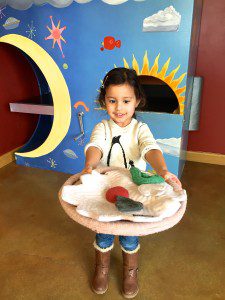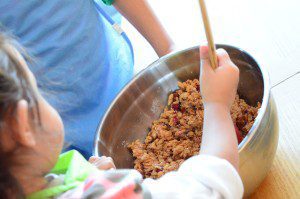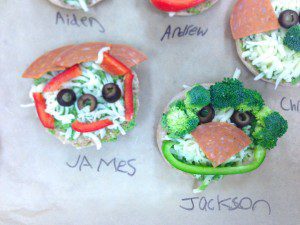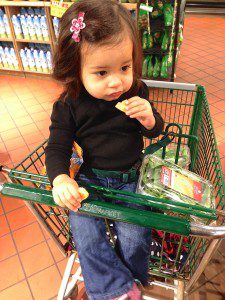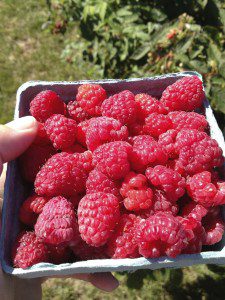Teaching our children about healthy food and how it nourishes them is important to their development. Obviously having our children help us in the kitchen is a wonderful way and will connect them to the food they put in their mouthes in a meaningful way (check out my cooking with kids 101 for tips on this). There are additional ways outside your kitchen to help build a foundation for healthy eating.
1. Pretend Play
Playing with pretend food can be such a great (non-messy) way to have children practice hands on food experience. Whether they are adding veggies to a fabric pizza or slicing some wooden fruit these experiences can help children express themselves and connect to making food. Children learn though play.
2. Take a Cooking Class
Cooking in a group environment with others can be a great dose of positive peer pressure. Sometimes just seeing other children making and trying new foods is all the encouragement they need. It will expose them to new recipes and ways to work with food and reinforce the things they learn at home.
(If you’re local to the Madison area check out my Yummy Sprout classes for children ages 2-12)
3. Grocery Shopping
While grocery shopping alone can feel like a mini vacation sometimes you have no options but to have your children with you (vacation turned chore just like that). Using these times to help children connect to healthy food can be very valuable. Give your children fruits or vegetables to hold and ask them about them. What color are they? Do they taste sweet? What can we make with them? If nothing else it at least keeps them busy. This is also great to do at Farmer’s Markets in the warm weather.
4. Art Projects
Using food to make art projects is another way to teach children about healthy food. Bell peppers and potatoes make great stamps for paint and paper. Painting with juice on white paper. String dry pasta (like rigatoni) on yarn to make jewelry. The possibilities are endless.
5. Sometimes Foods
A great way to help children learn about healthy eating is to discuss “sometimes foods” and allow them to have treats once in awhile. Completely denying “sometimes foods” might backfire when children get older. My daughters cannot have artificial flavoring or coloring due to a severe intolerance so that limits a lot of what the can have from the “sometimes foods” but I do allow them to have treats (like chocolate chips, homemade donuts, dye-free candy, organic cupcakes from Bloom). We also discuss the ways in which healthy food nourishes our bodies and we need them to grow. In my experience this approach has helped them make great choices. They love healthy foods. If there are ingredients and foods your family avoids explain to your children why. They will begin to understand why parents sometimes say yes to treats and sometimes say no.






